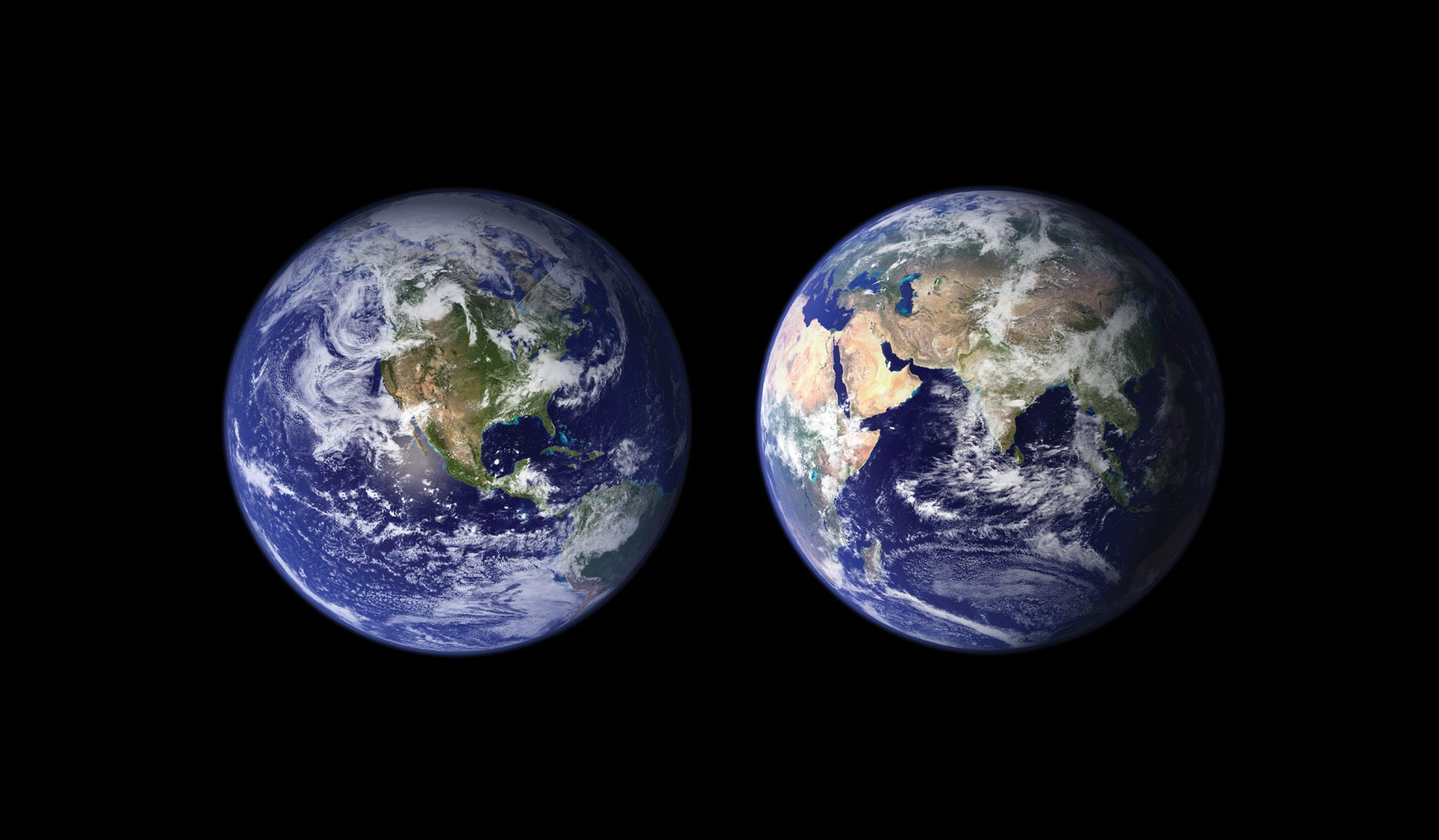CHAPTER
9

The two hemispheres of Earth.
The Living Earth
LEARNING GOALS
By reading the sections of this chapter, you will learn
| 9–1 | What powers the motions of Earth’s atmosphere, oceans, and land surfaces |
| 9–2 | How scientists have deduced the layered structure of our planet’s interior |
| 9–3 | The evidence that the continents are being continuously moved and reshaped |
| 9–4 | How life on Earth is protected from subatomic particles emitted by the Sun |
| 9–5 | How the evolution of life has transformed Earth’s atmosphere |
| 9–6 | What causes the patterns of weather in our atmosphere |
| 9–7 | How human civilization is causing dramatic and adverse changes to our planetary habitat |
When astronauts made the first journeys from Earth to the Moon between 1968 and 1972, they often reported that our planet is the most beautiful sight visible from space. Of all the worlds of the solar system, only Earth has the distinctive green color of vegetation, and only Earth has liquid water on its surface. Compared with the Moon, whose lifeless, dry surface has been ravaged by billions of years of impacts by interplanetary debris, Earth seems an inviting and tranquil place.
But the appearance of tranquility is deceiving. The seemingly solid surface of the planet is in a state of slow but constant motion, driven by the flow of hot, deformable rock within Earth’s interior. Sunlight provides Earth’s atmosphere with the energy that drives our planet’s sometimes violent weather, including all the cloud patterns visible in the images shown here.
Unseen in these images are immense clouds of subatomic particles that wander around the outside of the planet in two giant belts, held in thrall by Earth’s magnetic field. And equally unseen are trace gases in Earth’s atmosphere, whose abundance may determine the future of our climate, and on which may depend the survival of entire species.
In this chapter our goal is to learn about Earth’s components—its dynamic oceans and atmosphere, its ever-changing surface, and its hot, active interior—and how they interact to make up our planetary home. By learning about Earth, we also learn about some of the same processes shaping the planets and moons we will look at in Chapters 10 through 14.